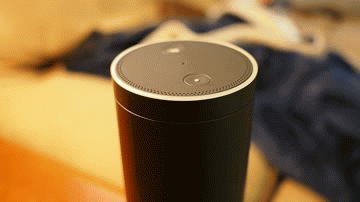It’s only Tuesday, and Amazon is already pushing Black Friday sales. Instead of a single day of discounts, the online retail giant is promoting Black Friday as a 10-day event, with discounts and lightning deals promoted all the way through Cyber Monday. Naturally, you get even better deals when you order with Alexa.
 Call it the Amazon effect, but most big retailers seem to be doing something similar. You can find early Black Friday sales going on now at many retailers including Walmart, Best Buy, Target, Macy’s, and even Costco. In fact, 49 percent of Americans plan to start their shopping before Black Friday weekend, according to a recent Nielsen survey.
Call it the Amazon effect, but most big retailers seem to be doing something similar. You can find early Black Friday sales going on now at many retailers including Walmart, Best Buy, Target, Macy’s, and even Costco. In fact, 49 percent of Americans plan to start their shopping before Black Friday weekend, according to a recent Nielsen survey.
Traditionally, Black Friday—a reference to when retailer revenues would switch from “in the red” to “in the black”—kicks off the holiday spending season. The thought may bring to mind images of late-night lines, tug-of-wars over Tickle Me Elmos, and stampedes of shoppers to the checkout line.
That vision is evolving, however, as digital platforms continue to disrupt the retail status quo.
The changeup in Black Friday strategy is closely related to shifting consumer trends and expectations. Consumers increasingly expect digital experiences for their holiday shopping—not just to purchase but also to research, review and recommend. Though in-store demand isn’t going away anytime soon, customers expect seamless, omnichannel experiences from retailers across web, mobile, and social media platforms.
Here are five holiday consumer trends that you might (or might not) expect—and why retailers and brands should pay attention.

5 Surprising Holiday Shopping Trends for 2017
Black Friday is huge, but Thanksgiving will be quiet.
Retailers will be quieter than usual on Thanksgiving Day, according to marketing solutions firm, Market Track. Less than a third of consumers surveyed said they would be shopping in-store on Thanksgiving, compared to half last year. The drop in Thanksgiving Day shoppers reflects the fact that consumers are making more purchases online, but it also suggests that people want to take a step back from consumerism in favor of real connection on a day of gratitude.
More retailers are opting to close their doors on Thanksgiving as well. The outdoor retailer REI famously closes its doors on Black Friday since 2015, instead encouraging its customers to explore the outdoors. The #optoutside campaign has actually boosted long-term sales for REI.
Online retailers are the most popular gift-buying destination this year.
Most gifts this year will be ordered online.
A surprising (or maybe not that surprising) 85 percent of US consumers plan to shop online this holiday season. The convenience of online shopping is obvious; 43 percent of consumers consider online purchasing better for their schedules. Who doesn’t love getting home and having their package already at the door?
Today’s consumers think Cyber Monday should be every day.
Although Cyber Monday is sure to be a great success for retailers and brands alike, the experts at Nielson predict a case of diminishing returns with the online event.
Simply put, consumers expect their needs to be met online at any time, from any device. The idea of a single day when digital deals are available goes against the consumer’s belief that they should be able to pick up their phone and place orders at a moment’s notice.
“It’s thinking about: how are you ready to meet shoppers’ needs throughout the entire season?” -Jordan Rost, VP of Consumer Insights Nielson
“Connected Spenders” are now your biggest potential for sales growth.
The demographic that The Demand Institute calls “Connected Spenders” is growing faster than the middle class and serves as a better indicator of where global consumption trends are headed. Unsurprisingly, the most important aspects of a “Connected Spender” is internet access, digital savvy, and participation in the digital economy.
These types of connected consumers are more eager to try new products and more likely to pay a premium for better quality items. They aren’t just using the internet to make purchases; they’re also using the web to research, review and recommend products to their peers. Their journey, as a buyer, is a largely digital experience.
Connected Consumers abandon without omnichannel shopping experiences.
Although many consumers are doing their shopping online, it’s crucial that the in-store experience doesn’t disappoint. Customers want integrated, seamless shopping experiences. If they do the research online, they want you to have it in stock at the store. If they have questions after leaving the store, they expect the same level of customer service on social media.
Connected Spenders are using the internet to explore and engage with retailers and brands—and as brands, you must be in control of that experience. How can you better serve the needs of this digital savvy consumer base? It’s clear from these trends that consumers are no longer interested in the status quo.
The old ways of marketing are broken. Engaging the right customer with the right message at the right time and through the right touchpoints requires new perspectives and a holistic rethink of your go-to-market strategy.
Transformational Marketers start with getting the right Story, Strategy and Systems in place—in that order—to get to their Destination. Learn how to accelerate your team’s transformation. Integrating a 3S Playbook methodology will help you bring simplicity, clarity, and alignment to your marketing efforts. Download our latest eBook Transformational Marketing: Moving to the TopRight to learn more.
Follow @TopRightPartner on Twitter, connect with Dave on LinkedIn, and subscribe to our blog.
